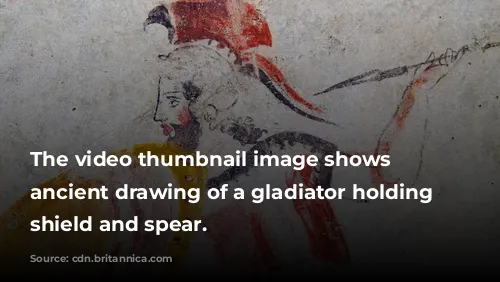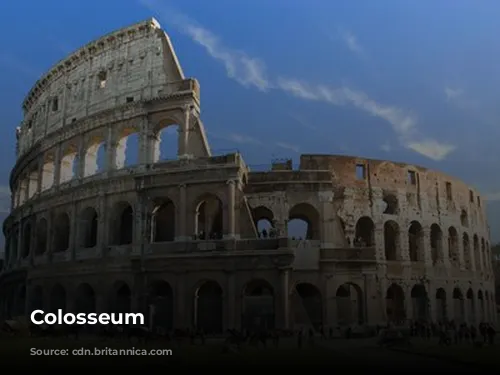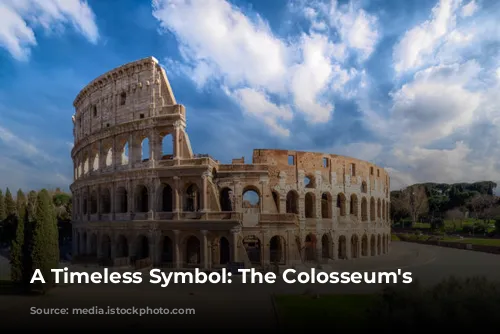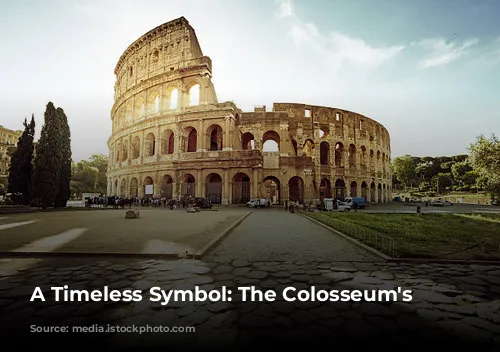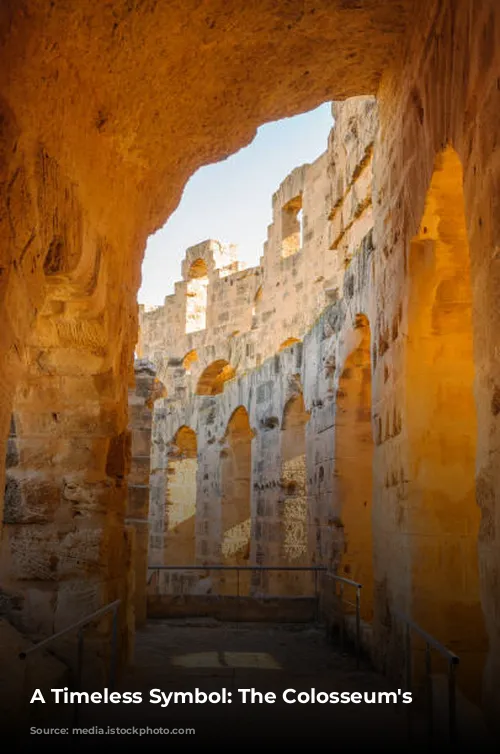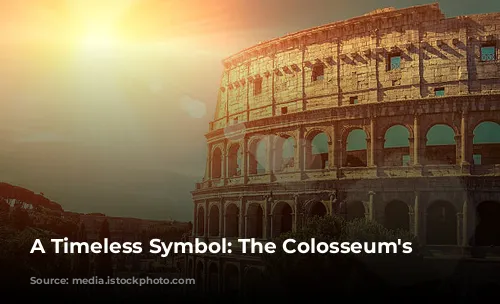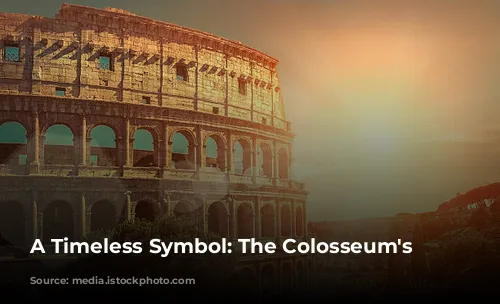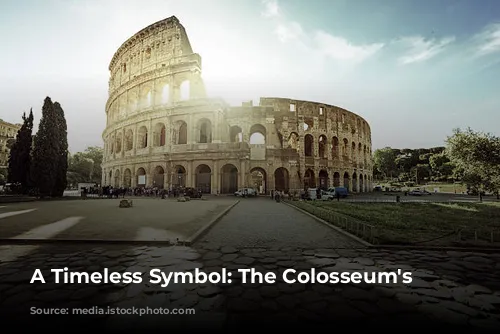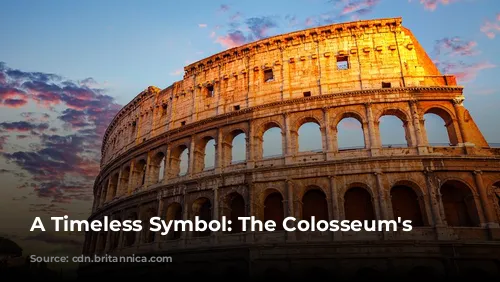The Colosseum, standing as a testament to ancient Roman ingenuity and grandeur, is more than just a relic of the past. It’s a vibrant reminder of the empire’s architectural prowess and a major economic force in modern Italy. Today, the Colosseum, the Roman Forum, and Palatine Hill together draw in over $63.3 million (€53.8 million) annually, making it the most popular tourist attraction in the entire country. This remarkable monument attracts millions of visitors each year, offering a glimpse into the heart of ancient Rome.
From Arena to Quarry: A History of Change
The Colosseum’s story reflects a fascinating journey through time, from its glorious beginnings as an entertainment venue to its neglect and eventual revival. After the fall of the Western Roman Empire, the once-grand amphitheater fell into disrepair, succumbing to the ravages of time and neglect. During the 12th century, the Frangipane and Annibaldi families transformed the arena into a fortress, utilizing its sturdy walls for their own purposes.
In the late 15th century, Pope Alexander VI permitted the Colosseum to be used as a quarry, a stark contrast to its former glory. For over a thousand years, the Colosseum was stripped of its decorative elements, its beauty slowly eroding away. Finally, in the 1990s, state-funded restoration efforts began, marking a turning point in the Colosseum’s fate. These efforts aimed to restore the magnificent structure to its former glory, allowing future generations to marvel at its grandeur.
A Symbol of Imperial Power: The Colosseum’s Birth
The Colosseum’s construction began under the Roman emperor Vespasian, between 70 and 72 CE, as a means to revitalize Rome after the turbulent “Year of the Four Emperors”. Like other amphitheaters of the time, the Colosseum was envisioned as a stage for entertainment, hosting gladiatorial contests, animal hunts, and even mock naval battles. This majestic structure was a symbol of Roman might and a source of pride for the citizens.
Vespasian’s son, Titus, completed the structure and dedicated it in 80 CE, celebrating the event with 100 days of grand games. Later, in 82 CE, Emperor Domitian added the Colosseum’s fourth story, further enhancing its grandeur and capacity. Importantly, the Colosseum’s construction was financed by plunder from Titus’s conquest of Jerusalem, and the labor was provided by enslaved Jews from Judea. This aspect of the Colosseum’s history offers a complex and often overlooked facet of its creation.
A Monument of Engineering: The Colosseum’s Design
The Colosseum, also known as the Flavian Amphitheatre, is an elliptical structure built with stone, concrete, and tuff, reaching four stories in height at its highest point. It measures 620 by 513 feet (189 by 156 meters), and could accommodate up to 50,000 spectators. The Colosseum was famously used for gladiatorial combat, showcasing the prowess and bravery of warriors.
Unlike other amphitheaters, the Colosseum is a freestanding structure, not built into a hillside for support. It relies on a complex system of barrel vaults and groin vaults, showcasing the Romans’ advanced engineering skills. The Colosseum’s facade boasts three stories of arcades framed by columns in the Doric, Ionic, and Corinthian orders, a design that would later inspire the Renaissance.
The Colosseum’s design is a testament to Roman architectural ingenuity, showcasing a remarkable blend of practicality and aesthetics. The structure’s sheer size and intricate details were meant to impress, both in terms of functionality and beauty.
A Thriving Arena: The Colosseum’s Life
The Colosseum offered its audience a spectacle of gladiatorial combat, animal hunts, and even mock naval battles. A massive retractable velarium (awning) shielded spectators from the sun, operated by hundreds of Roman sailors. The Colosseum’s grandeur and the thrill of the events held within made it a focal point of Roman life, captivating the city’s residents and visitors.
While the Colosseum is often associated with gladiatorial combat, its use extended beyond these events. Animal hunts, mock naval battles, and other forms of entertainment attracted audiences from all walks of life, offering a glimpse into the diverse cultural landscape of ancient Rome.
However, the Colosseum’s role in the martyrdom of early Christians is uncertain, a topic debated among historians. The Colosseum’s association with these events adds a layer of complexity to its history, leaving room for further exploration and debate.
From Ruins to Revival: The Colosseum’s Legacy
The Colosseum’s story is not one of continuous grandeur, but of cycles of decay and revival. In medieval times, it was repurposed as a church, and later as a fortress by the Frangipane and Annibaldi families. Over time, lightning strikes, earthquakes, vandalism, and pollution further damaged the structure, stripping it of its marble seats and decorative materials.
Despite its neglect, the Colosseum remained a symbol of Rome’s past, attracting visitors even in its dilapidated state. The Colosseum’s preservation began in earnest in the 19th century, with notable efforts led by Pope Pius VIII. In the 1990s, a major restoration project revitalized the structure, ensuring its preservation for future generations.
Today, the Colosseum is a prominent tourist attraction, drawing close to seven million visitors annually. Changing exhibitions showcasing ancient Roman culture further enrich the visitor experience. The Colosseum’s legacy is a testament to the resilience of history and the enduring power of human creativity. Its enduring popularity speaks to its timeless appeal, drawing visitors from all corners of the world to witness the grandeur of ancient Rome.

